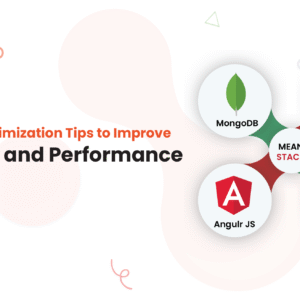
As organizations scale their infrastructure and adopt cloud-native technologies, maintaining security, compliance, and governance becomes increasingly complex. Traditional manual processes are no longer efficient or reliable for enforcing organizational policies. This is where Policy-as-Code (PaC) comes in—a modern approach that codifies and automates policy enforcement across systems and services.
When integrated with powerful platforms like AWS and tools such as the Open Policy Agent (OPA), Policy-as-Code provides a dynamic approach to ensuring consistent governance across cloud environments. In this blog, we’ll explore how PaC works, its integration with AWS, and how OPA serves as a flexible and scalable tool for policy management. You can master these essential cloud and DevOps strategies with guidance from a reputed Training Institute in Chennai, where courses are tailored to current industry practices.
What is Policy-as-Code?
Policy-as-Code refers to writing policies in a machine-readable format so they can be automated and enforced consistently across environments. These policies can govern security rules, resource configurations, network access, or compliance controls. Instead of relying on manual checklists or ad-hoc scripting, PaC allows teams to automate policy enforcement, detect non-compliance early, avoid human errors, and promote collaboration between security and development teams.
Understanding Open Policy Agent (OPA)
OPA is an open-source, general-purpose policy engine that decouples policy decisions from the application logic. It uses a high-level declarative language called Rego to define policies, enabling flexibility and fine-grained control over enforcement.
OPA is widely used across the cloud-native ecosystem, especially in environments that rely on Kubernetes, CI/CD pipelines, microservices, and cloud platforms like AWS. It supports complex policy definitions, real-time policy evaluation, easy integration with services and infrastructure, and community support and extensibility.
The Scope of AWS in Modern Enterprises
Before diving deeper into technical integration, it’s important to understand the Scope of AWS in today’s cloud ecosystem. As one of the most widely adopted cloud platforms, AWS powers infrastructure for startups, government organizations, and Fortune 500 companies alike. AWS provides more than 200 services that address almost all IT and business requirements, from compute and storage to machine learning and compliance. Its scalability, global reach, and ecosystem make it the preferred platform for implementing large-scale cloud governance strategies such as Policy-as-Code.
Integrating OPA with AWS Services
AWS offers native tools to enforce policies, such as IAM, SCPs, and Config Rules. However, integrating OPA provides a more customizable and scalable layer of policy governance.
- With Identity and Access Management (IAM), OPA allows for evaluating access policies based on dynamic business rules, enabling fine-grained access controls beyond AWS IAM.
- When working with Infrastructure as Code (IaC) tools like Terraform or AWS CloudFormation, OPA validates templates before deployment to ensure they meet organizational standards.
- In CI/CD Pipelines, OPA can be embedded within AWS CodePipeline or CodeBuild to evaluate configurations during the build or deploy phases, preventing policy violations from reaching production.
- For Kubernetes on AWS (EKS), OPA integrates with Kubernetes via Gatekeeper, enforcing admission control policies and blocking risky configurations.
Advantages of Getting an AWS Certification
Understanding AWS tools like CloudFormation, IAM, and CodeBuild is essential for implementing Policy-as-Code effectively. One of the Advantages of getting an AWS certification is that it attests to your proficiency with these services. Certification also demonstrates your commitment to cloud security and governance practices—an asset for professionals seeking roles in cloud architecture, DevOps, or compliance engineering. Moreover, AWS-certified individuals are often preferred by employers for projects involving advanced cloud automation, such as policy enforcement through OPA.
Real-World Use Case: Enforcing Tagging Policies
Consider a scenario where your organization requires all AWS resources to include specific tags such as Environment, Owner, and Project. Instead of manual tagging or periodic audits, OPA automates enforcement. You define a Rego policy to check for the required tags, integrate OPA into your IaC pipeline, and evaluate the configuration during deployment. If tags are missing or incorrect, the deployment is blocked. This not only ensures compliance but also helps manage costs effectively.
Such practical use cases are a core part of the curriculum in leading AWS Training in Chennai programs, which emphasize applying theory to real-world cloud security challenges.
Best Practices for Implementing Policy-as-Code
- Document before coding: Clearly understand your policies before converting them to code.
- Version control: Store policies in Git for collaboration and traceability.
- Test thoroughly: Just like application code, policies must be tested with sample data.
- Centralize enforcement: Use CI/CD pipelines or OPA gateways for consistent execution.
- Ensure visibility: Use dashboards and logging to monitor policy activity and violations.
Policy-as-Code is a transformative approach that brings automation, security, and consistency to cloud governance. When paired with AWS and tools like Open Policy Agent, it empowers teams to enforce complex policies at scale across infrastructure, applications, and access control.
As organizations continue to embrace DevSecOps and cloud-native development, adopting a Policy-as-Code framework will become essential for maintaining control without slowing down innovation. Leveraging OPA within AWS environments provides a powerful and future-proof solution for policy enforcement. Whether you’re securing access, validating configurations, or automating compliance, Policy-as-Code with AWS and OPA supports a more secure and agile cloud journey.








